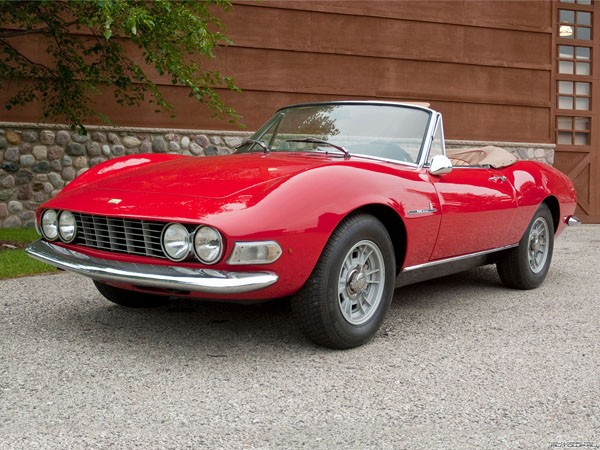In the late 1960s new homologation requirements were imposed on all racing car manufacturers which required that all Formula Two cars were in future to be based on derivatives of production cars – and that meant a minimum of 500 units available to the general public. This new requirement put Ferrari into a difficult situation. They had spent a lot of time and money developing a new engine but they were not in the business of mass-producing cars.
They say that a true friend is one that you can rely on when in difficulty. And so it was in Ferrari’s case when he recalled a conversation he had with the Fiat management at the 1964 Turin Motor Show. There the conversation went along the lines of “if you ever need any help you only have to ask.” And so Ferrari did.
Such a request must have seemed like a godsend to the Fiat management as at that time they were looking at the possibility of designing a new model to replace the ageing and rather unfashionable 2300S coupe. The concept seemed right but they entered into an agreement with Ferrari to produce the engine in production quantities with a certain amount of caution.
The Ferrari engine was a very sophisticated unit and rather too complex to power a sporty little mass-produced sportscar. It needed detuning and production engineering to make it suitable for one of Fiat’s models. When the first Fiat Dino prototype was put on display at the Turin Motor Show in 1966 it was received with enthusiastic acclaim both for its looks and its appeal as a `driver’s car’.
The car displayed was an open spyder, with a body designed by Pininfarina. The aggressive looking grille and curved bonnet line were somewhat tempered by the slightly flared front wings. The pronounced curvature of the side panels with a distinct crease running the entire length of the car gave the body a standout image.
Whilst the front suspension was quite conventional with coil spring/dampers, wishbones and a 25mm stabiliser bar, the rear suspension was a little unusual. It utilised single leaf springs, which tapered in thickness from the centre downwards, with twin dampers for each wheel on either side of the axle and another stabiliser bar. The axle itself was located by radius arms and the whole suspension was typical Fiat design for a front-engined, rear-wheel drive car.
The engine of course was the Ferrari designed V6 rated at 1987cc. It retained the 54-degree angle of earlier Ferrari units, which gave more space for the induction system, although it was close enough to the ideal 60-degree angle not to create any imbalance problems. It featured a sand-cast aluminium cylinder block with pressed-in liners and, by using a large bore size and small valves achieved good gas flow.
The cylinder heads were also cast from light alloy and, like Ford, Fiat used a crankshaft with four main bearings. The four overhead camshafts were driven by a single duplex timing chain.
So this was the car which enabled Ferrari to continue racing in 1967 and also gave Fiat a strong weapon with which to do battle in the international sportscar market. But Fiat didn’t stop there for the Dino Spyder was hardly a replacement for the 2300S coupe.
To fill this breach Fiat launched a two-door closed coupe, styled by Bertone, at the March 1967 Geneva Show. Both models were given a face-lift in 1969. In all, only 6068 coupes and 1583 spyders were built before production ceased in 1972.









